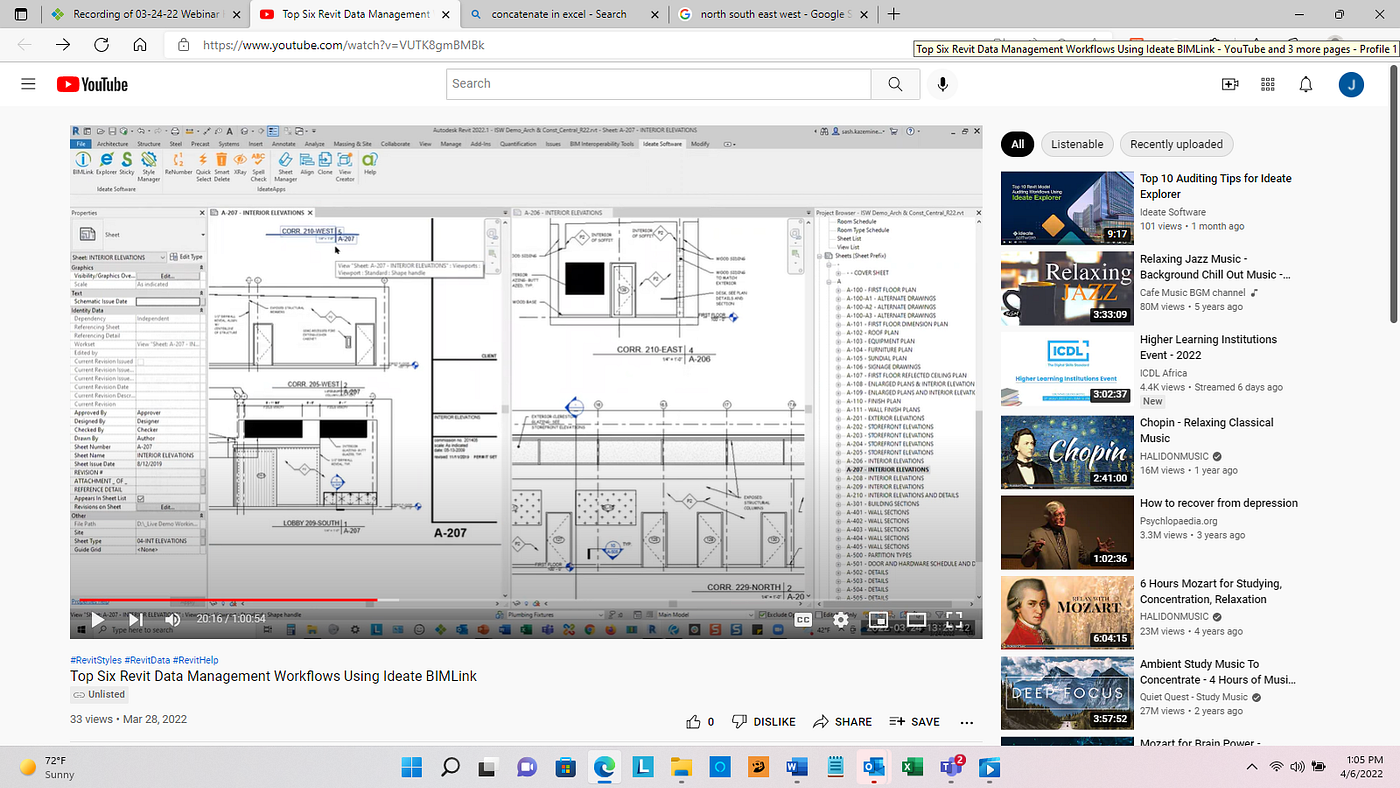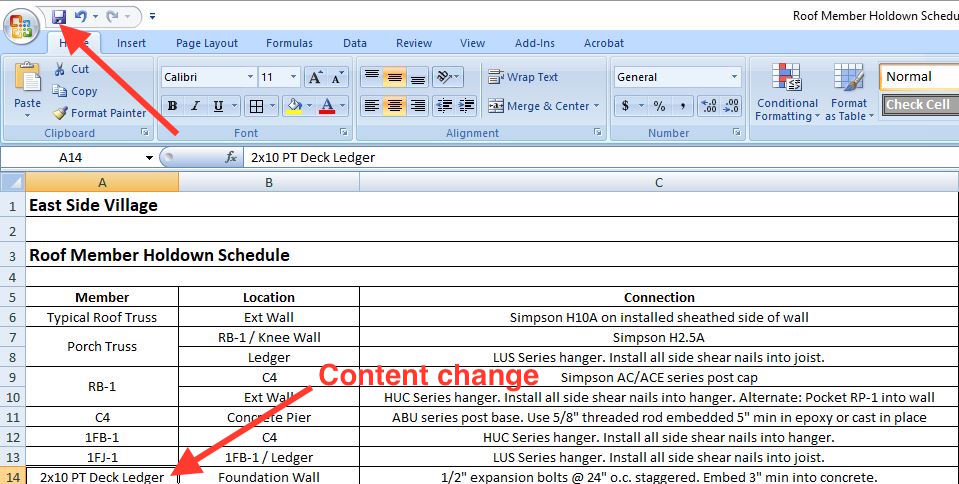Maximize Efficiency with Top-Rated Revit Plugins
Wiki Article
Excel-to-Revit: A Game-Changing Process for Architectural Layout - Revealing the Tricks
Are you tired of spending hours on building design? Look no additional! Presenting excel-to-revit, the game-changing process that will certainly change your style procedure. With excel-to-revit integration, you can enhance your building style, unlock efficiency, and maximize cooperation within your group. In this write-up, we will introduce the keys of this effective device, showing you exactly how it can change your style tasks. Prepare to take your architectural style to the next level with excel-to-revit!The Power of Excel-to-Revit Combination

Visualize the convenience of being able to modify and update project information in Excel, and immediately see those changes mirrored in your Revit model. Say goodbye to hand-operated data entrance or tiresome updates. With Excel-to-Revit combination, you can save time and decrease mistakes by leveraging the power of Excel's formulas and functions to automatically generate precise information in Revit.
Not only does this integration improve effectiveness, yet it also boosts collaboration among staff member. You can quickly share Excel files with coworkers, that can then import the data right into their Revit models. This promotes a smooth exchange of info and ensures that everyone is working with one of the most up-to-date information.

Simplifying Architectural Layout With Excel-To-Revit
Simplifying building style is simplified with using Excel-to-Revit (revit tool). With this powerful combination, you can optimize your workflow and conserve valuable time throughout the layout procedure. By leveraging the abilities of Excel and Revit, you can flawlessly move information between the 2 platforms, eliminating the requirement for hands-on information access and decreasing the threat of errorsExcel-to-Revit enables you to import and export data easily, allowing you to easily upgrade and modify your building layouts. You can create schedules, determine amounts, and generate records in Excel, and then move that data straight into your Revit model. This combination makes sure that your design info is constantly current and synchronized, getting rid of the requirement for hand-operated updates and lowering the chances of incongruities.
By using Excel-to-Revit, you can also capitalize on the powerful computational capabilities of Excel. You can carry out complex estimations, analyze information, and automate repeated jobs, all within Excel. Then, with just a couple of clicks, you can import the outcomes back right into Revit, enabling you to make informed style choices and optimize your architectural layouts.
Unlocking Performance: Discovering the Excel-to-Revit Operations
Maximize your productivity by flawlessly integrating Excel and Revit for a much more effective operations. With the Excel-to-Revit workflow, you can open an entire brand-new level of efficiency in your building layout procedure. By using the power of Excel's data monitoring capacities and combining it with the adaptability and precision of Revit, you can enhance your layout procedure and save important time.Among the vital advantages of this combination is the capacity to import and export data in between Excel and Revit. This implies that you can conveniently transfer task information, such as space timetables or product quantities, from one software program to the various other, getting rid of the need for hand-operated data access and minimizing the chances of mistakes. You can also create customized formulas and computations in Excel to automate repeated jobs and carry out complex calculations, which can after that be perfectly incorporated right into your Revit versions.
In Addition, the Excel-to-Revit operations enables better sychronisation and partnership between group participants. With Excel acting as a central information center, several employee can service different aspects of the task concurrently, updating and sharing information in real-time. This not only enhances interaction yet additionally makes sure that every person is working with one of the most current information, getting rid of the risk of disparities.
Making The Most Of Collaboration: Excel-to-Revit for Architectural Teams
By flawlessly incorporating Excel and Revit, architectural teams can greatly boost partnership and accomplish extra reliable design outcomes. When utilizing this powerful operations, you can conveniently move data in between Excel spreadsheets and Revit models, improving the design procedure and improving communication among team members.Moreover, by leveraging Excel's powerful calculation capabilities, you can perform complicated computations and analysis on your layout data, driving and offering beneficial insights informed decision-making. This assimilation additionally allows you to export data from Revit to Excel, enabling you to develop detailed reports, graphes, and charts for presentations and analysis. This joint operations promotes reliable interaction and control among group members, as Excel works as a main hub for information management and sharing.
General, by accepting the Excel-to-Revit workflow, you could try here building groups can achieve higher levels of collaboration, performance, and precision in their design process. import excel into revit. This assimilation equips teams to interact effortlessly, making certain that everybody gets on the same page and adding to the success of the task
Introducing the Keys of Excel-to-Revit Integration

One of the tricks of Excel-to-Revit integration is the ability to leverage the power of solutions and calculations in Excel to drive criteria and produce facility geometries in Revit. You can link Excel spreadsheets to Revit families, enabling you to input information straight into the spread sheet and have it immediately upgrade in the Revit design. This streamlines the style process and ensures accuracy and uniformity throughout the task.
An additional trick is the ability to produce custom routines and records in Excel, making use of information drawn out from Revit. This permits you to examine and imagine task information in a means that is not possible within Revit alone. You can conveniently produce amount take-offs, expense price quotes, and project timelines, giving valuable insights for decision-making and job monitoring.
Additionally, Excel-to-Revit integration allows efficient cooperation among team participants. Several customers can function on the very same Excel spreadsheet all at once, making it less complicated to coordinate and track changes. You can likewise utilize Excel's commenting attribute to offer feedback or communicate design modifications.
Conclusion
By integrating the power of Excel and Revit, designers can currently function a lot more efficiently, conserve time, and generate far better designs. Beginning integrating excel-to-revit assimilation right into your architectural style process today and change the way you function.With just a few clicks, you can import the outcomes back into Revit, permitting you to make educated style decisions and maximize your architectural designs.
By using the power hop over to these guys of Excel's data management capacities and integrating it with the adaptability and precision of Revit, you can simplify your design process and conserve useful time.
By perfectly integrating Excel and Revit, architectural teams can substantially enhance cooperation and accomplish extra efficient style outcomes. When utilizing this effective operations, you can conveniently transfer information in between Excel spread sheets and Revit models, improving the layout process and improving communication amongst group members.In addition, by leveraging Excel's powerful estimation capacities, you can carry out complicated estimations and evaluation on your layout data, driving and offering important understandings informed decision-making.
Report this wiki page